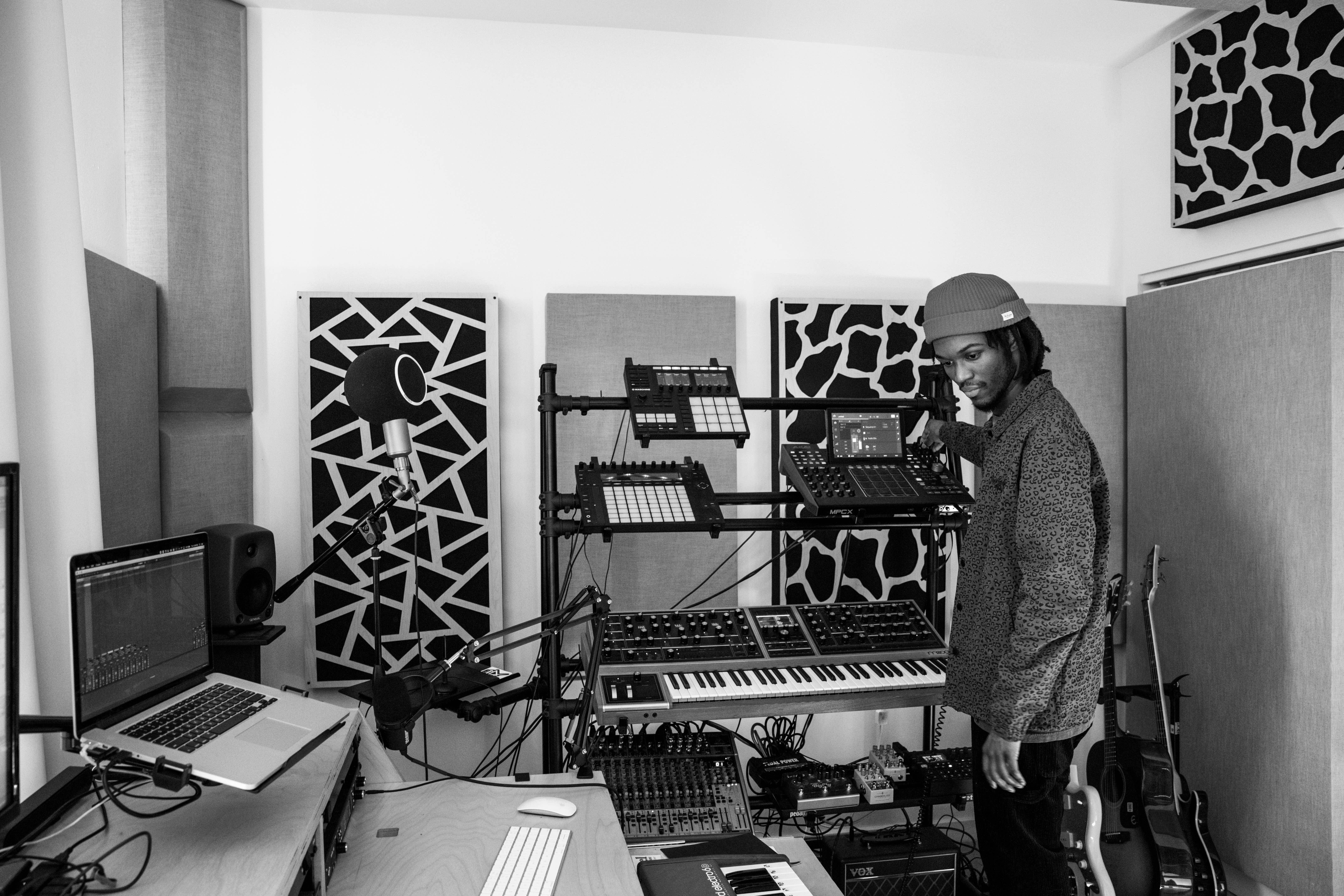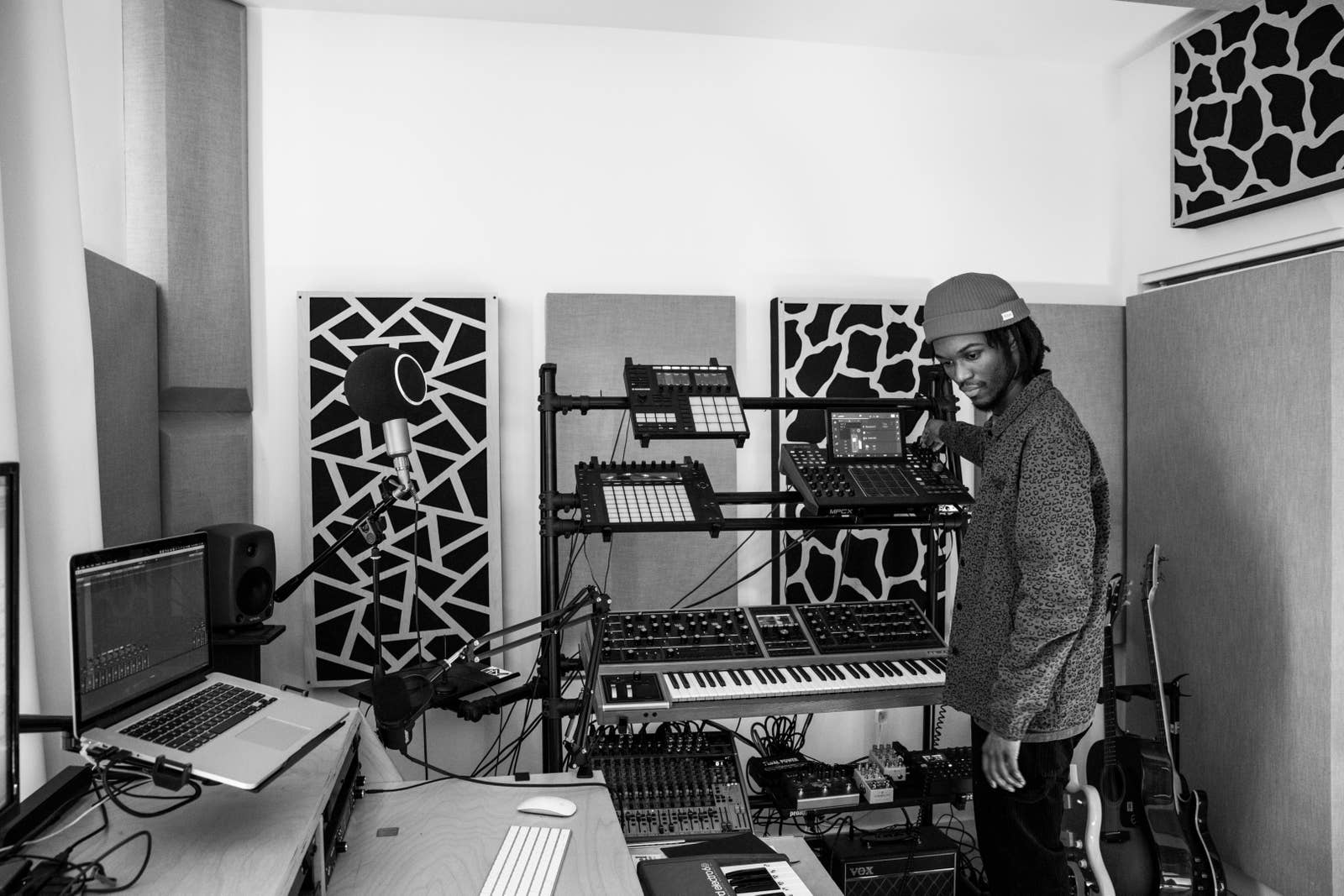
I was talking to my therapist a few weeks ago about my relationship with money. Like many of my peers, I am from a long line of poverty; not a new story. I told my therapist that poverty felt inescapable. And growing up, that was true. So I didn’t necessarily view my infatuation with music early on as something that would change that truth for anybody. I made music out of urgency. To cope and to connect. I never cared if I was talented or not.
This new hobby was honestly my body’s natural response to my first trauma. When you’re young, your parents are superheroes, and my superman was on a plane 800 miles away. I never held it against my father because I understood. I watched my hero leave a life he loved to start from scratch on a new land to follow his own dreams. His belief in himself created a fearlessness in me beyond measure. I spent the next 10 years of my life working and studying to learn everything I could about hip-hop, my own dream.
I’m writing this essay to start an honest conversation around artist development and ownership. While these have always been popular topics, it’s rare to find artists or people in the industry going into detail about them. As an independent artist who has turned the dream into a financially sustainable career, I’m going to share with full transparency the investments I’ve made, the pieces I’ve put in place, and the numbers that made it work.
Before we get into anything, let me share a disclaimer that in my experience, there is no cookie cutter outline of success. It looks different for everybody. And the grind to get there is unique for everyone. I will share my experience thus far and for some of you reading this, I’m sure some of the things I’m saying will apply. But some of it will be unique to my story, left up to chance, coincidence, or maybe even a little luck.
Tons of artists are comparing themselves to people with completely different goals than they have. The most important thing for an artist early on is to know what they want. This is subject to change, so it’s okay if you only know what you want right now, but being able to answer that question to some extent is really important. Next, I’ll say that everything you hear about people working really really fucking hard is true. Even truer than they make it sound. People aren’t ending up in good positions by accident. People are sacrificing a lot, their time more than anything, and putting all that they can into this. I’m no different in that regard. It took many years for me to even scratch the surface.
I still consider myself as someone who operates mostly outside of the industry. I still like to do things my own way, so our grind has been very organic in that regard; growing little by little over time. It’s frustrating at times having to be so patient, but so far the pay off has been unbelievable. I did everything in my power to make sure the ground that I was building on was solid before I tried to skip to the next level. It has never been a race.
I MADE MUSIC OUT OF URGENCY. TO COPE AND TO CONNECT. I NEVER CARED IF I WAS TALENTED OR NOT.
With a group of friends from the neighborhood and a few members of my family, we formed a collective that’s now Pivot Gang. I was 13 or 14 but Joseph and Melo were a couple years older and had the funds so everybody else could put $50 in to buy a mic and an interface to go along with a computer and headphones that we already had. That’s when we started recording for real. I learned how to use it through trial and error mostly, but watching other people helped too. I’m like a sponge in that regard, so I also watched a bunch of online tutorials. Once I had a solid feel for it, I started recording other artists, sometimes making $40-50 a session. Eventually, that made up for the cost of the equipment. Anything on top of that we would continue to reinvest into the studio.
That small home studio we built in my grandma’s basement 10 years ago has grown so much over time, to something we would eventually invest thousands of dollars into. It’s a place where we’ve been able to experiment with writing and producing, getting thoughts out in the moment and turning spontaneous ideas into actual recordings. When I have the best ideas fleshed out and rehearsed, I can take them to a higher end studio to maximize my time and money spent. But sometimes, I’ll just use the original recording. Early on, I like to advise people to get their own shit as opposed to paying for studio time, but only if you’re willing to learn it. Think about it, if you go to the studio for a few hours you might be out of a few hundred bucks. Whereas if you pay a few hundred to have the equipment, you have it forever.
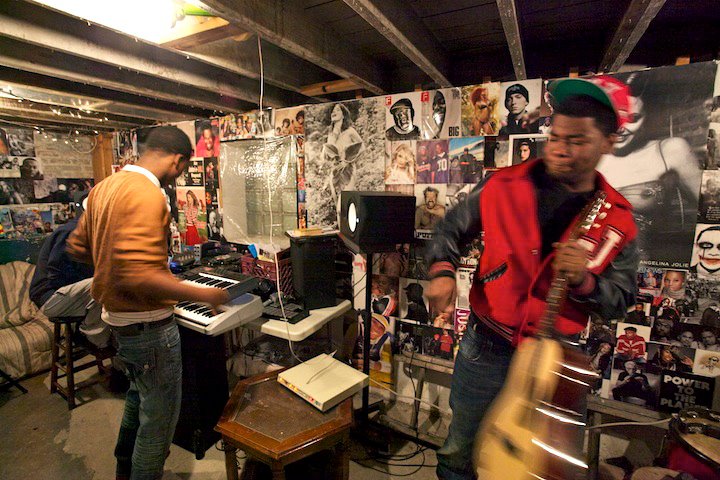
I graduated high school when I was 16 years old, and that summer is when I linked up with Walt and Frsh Waters and we got shit moving. We recorded every day that summer in my grandma’s basement with the rest of Pivot. I used to record all of Jean Deaux and Noname’s music down there, the homie Benjamin Earl Turner too, the list goes on and on.
Community. This is important to the story. We built a village. An army of talented people who were all dedicating their lives to the craft. Our goal that year was to make 300 songs, and having a community made it possible. We wanted to see each other win, genuinely. We believed in each other’s talents and we knew it would take us somewhere else.
That community expanded with local shows and open mics. I had been working with Mick Jenkins on a few records, the most notable being a song called “Heaux.” That was the record that made Chance The Rapper reach out to me. We had already been cool and knew each other from the open mic scene in the city, but we never had a working relationship. There was a lot of hype around Acid Rap and I knew that my verse would be a big deal regardless of how I did on it, but I wanted whatever I laid to stick. It was a really big look for me early on that introduced me to a wider national audience.
These are the types of things that you can’t predict happening, but when you’re focused and building a name for yourself on your own, people start to take notice. Being featured on that Chance record was most people’s introduction to my music at the time. When Acid Rap came out, there was no immediate change in my life. My Twitter followers weren’t changing how I wanted them too, blogs were tagging the wrong account, it just felt stagnant. I figured more people had to be talking about it, so I got on Twitter and I would search Saba and the song title and I would favorite everything people were saying. I was favoriting hundreds of thousands of tweets, and I started noticing my followers going up. So I kept doing it.
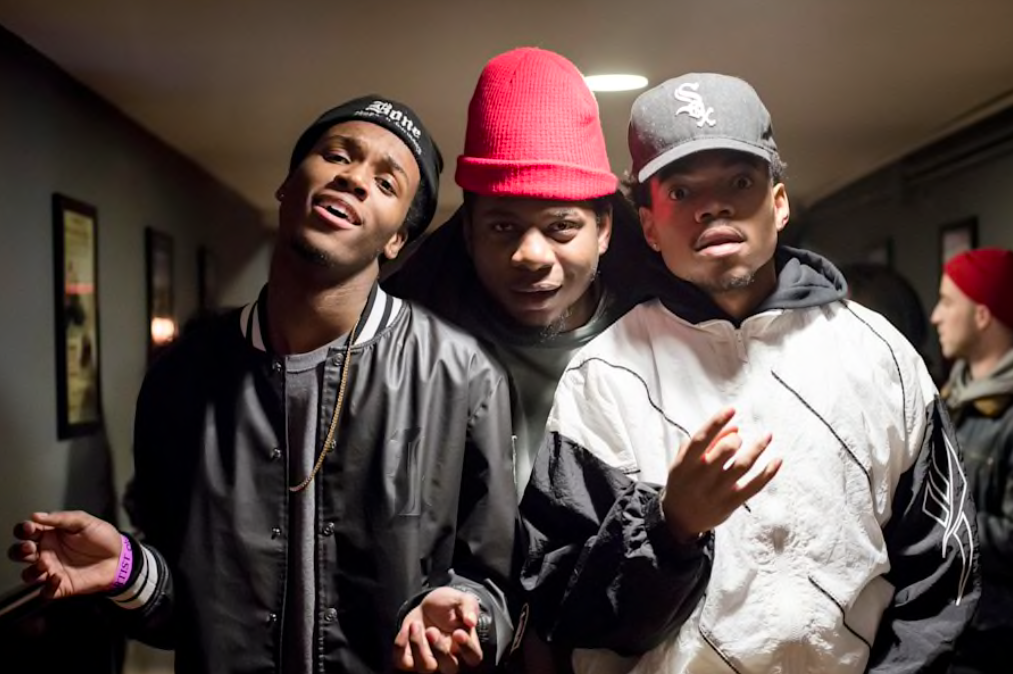
Social media has the power to even the playing field. It’s the one thing in every artist’s arsenal that allows them to immediately connect with millions of people directly. I have a love / hate relationship with social media myself, but for sake of this point, let’s just focus on the love part. Engagement and talking to fans directly is a huge advantage that artists who are in control of their own social media presence have. You don’t need a million followers to be championed online, you just need content that people interact with and share. It’s a necessary part of the job for independent artists.
Once you get a following, you have to understand the value of your influence. It’s important to be aware of your brand and consider the audience and messaging of anyone that you work with. What I mean is; Every bag is not the right bag for you. When you’re a newer artist, a majority of the partnership offers will include some form of social posting. I think it’s important to not let things become too watered down to where you lose the trust of your own audience. Staying active on social media is important for that. Plus, you get to make people’s day by replying to fans and just being present, and that’s just tight.
Before I got $10,000 to rap, I got $10,000 from a brand to wear a pair of shoes. Every single cent of that went towards funding my first national tour. After the release of Bucket List Project in 2016, I really wanted to go on tour with someone else as their opener, but it didn’t quite work out like that. Sometimes situations like that come down to relationships with people, which I didn’t really have at the time. So my agent, Jon Briks at UTA, began setting up my own tour. I hadn’t played many headlining shows outside of Chicago back then, with the exception of some major cities like New York or LA, maybe Boston.
I was really nervous about ticket sales considering it was literally uncharted territory for me but I went with it. Fuck it. Being independent, it was up to us to figure everything out. Going on tour is expensive, but it’s especially expensive when you’re essentially your own investor. We had to find money and I hated taking money from people, I still do honestly. But we had to do something. I ended up doing a distribution deal for one single, 80/20 split in my favor, and they would give us $4,000 for the song on a 3 year license. That was my first time ever being advanced money. And of course, all of that plus the $10k from the brand partnership went to funding the tour.
BEFORE I GOT $10,000 TO RAP, I GOT $10,000 FROM A BRAND TO WEAR A PAIR OF SHOES. EVERY SINGLE CENT OF THAT WENT TOWARDS FUNDING MY FIRST NATIONAL TOUR.

I learned the importance of touring very early. Not because of the money, but because it was what I loved to do. It made it feel like it was real life, and not just some dream. You get to see people connect to the music in real time. I started performing as much as I could in 2013, first locally, then regionally to nationally, and now globally. From funky ass basements in Peoria to the Sydney Opera House in Australia. Whether it was making a few hundred to cover gas and equipment rentals or tens of thousands to cover flights, hotels, and production including lights and sound engineering, as well as rates for tour management and a tour bus driver, no matter how much money we’ve made it always ends up going back into what we’re doing and the pot for the next project or video or tour.
While we didn’t see a huge return financially early on, staying active on the road is essential for building an audience. And by staying dedicated to touring in so many markets, you build loyalty with that audience. Over time, I’ve been able to see the audiences grow from tens to hundreds to thousands. And as that audience grows, so too does the demand, and the income starts to exceed the expenses.
We were never afraid of hitting the places that weren’t guaranteed sell outs. Some of those places that not all tours go to, we would go consistently to build the fan base there. Watching those crowds grow is a slow process but patience is a big part of this. Tour is also the best time to introduce new merchandise. Oftentimes, particularly in the beginning when the offers to perform are low, merch sales can help with covering the expenses of being on the road. Especially when everything is self-funded.
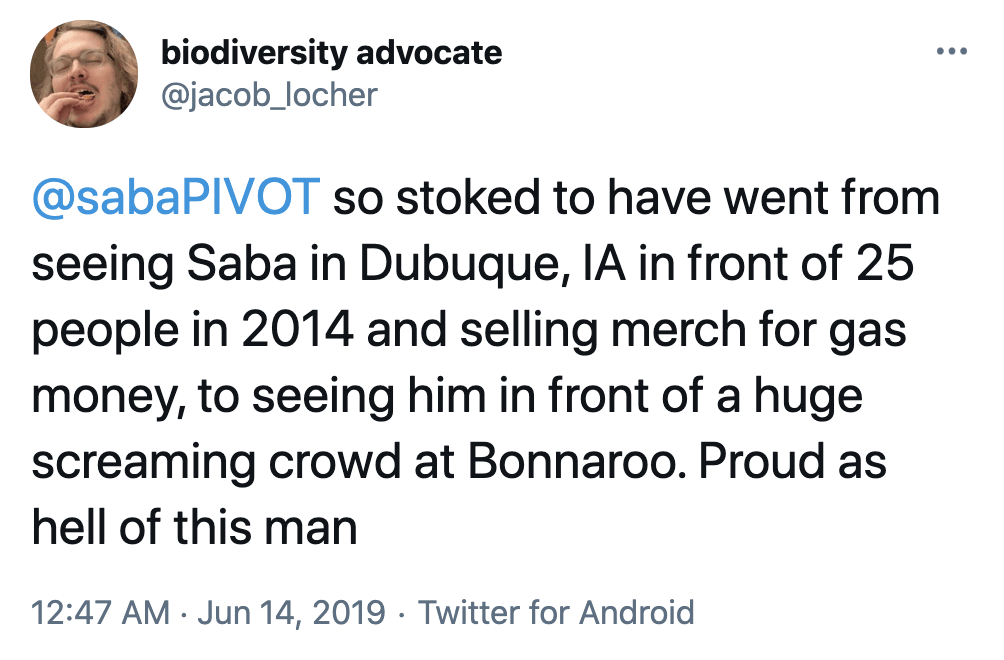
Between ComfortZone and Bucket List Project I went through a change in management. A lot of times people prematurely seek management, myself included, when there really isn’t much to manage yet if you’re still getting your product together. People’s idea of management is often opening doors, getting them booked, or getting them features, as if the manager is the magic missing link to their audience. I’ve never seen that be the case. Usually the artist has to do a lot of work to even be noticed by a manager. It’s a game of patience and consistency, like everything else. Ideally, your manager would come to you. Sometimes people go through different managers in different phases of their careers. By going in on my own, building my catalog and putting out more music, people started to know I existed.
In my experience, the managers can early on be a part of the audience that you cultivate for yourself. My management team today, Cristela and Rory, were fans of ComfortZone and working in different areas of the music business on opposite coasts. Cristela was in Santa Cruz working at an artist management and event production company while Rory was in NYC at a PR company. This allowed me to stay fully focused on music while they could take charge of other aspects of the business like show production, distribution, and marketing that are significant for growth, but maybe not at the forefront of a lot of artist’s brains early on. At that stage of my career, having people on each coast and with unique skill sets really helped to build the foundation that we were able to establish my business on as an entity of its own. Shout out to LLC twitter.
I STARTED PERFORMING AS MUCH AS I COULD IN 2013, FIRST LOCALLY, THEN REGIONALLY TO NATIONALLY, AND NOW GLOBALLY. FROM FUNKY ASS BASEMENTS IN PEORIA TO THE SYDNEY OPERA HOUSE IN AUSTRALIA.
In building a financially viable career as an artist, one of the most important things I’ve learned over time is the value of royalties. It’s what every label and distribution company wants participation in, and in every conversation I’ve had with any of them about future projects, the option to also move my back catalog comes up. There’s not a definite right or wrong answer to that, but every artist should just understand the value of their catalog.
For example, my song “Photosynthesis” had a very regular amount of plays when it came out four years ago and now it’s my most streamed song with 100M+ streams. Seeing how a song like that can grow so much over time and still stream consistently well shows why a label would want to own that. We didn’t even release it as a single. No video, no marketing at all really. Just a good song that people love and continue to share.
Being independent, you move on your own clock. You see the tedious details and have to be patient. You water a seed every day as opposed to just getting a plant. Not all artists are able to see the direct results of that in the way we have. Royalties are passive income, and it would be hard for me to confidently give up ownership of that now. Being able to get paid from what you did four years ago is essentially what retirement is. I’m not telling everybody to be independent because I think major labels can work for certain artists. But I don’t see a situation where having ownership is bad for anyone. Regardless of how your situation looks, everybody should want that.
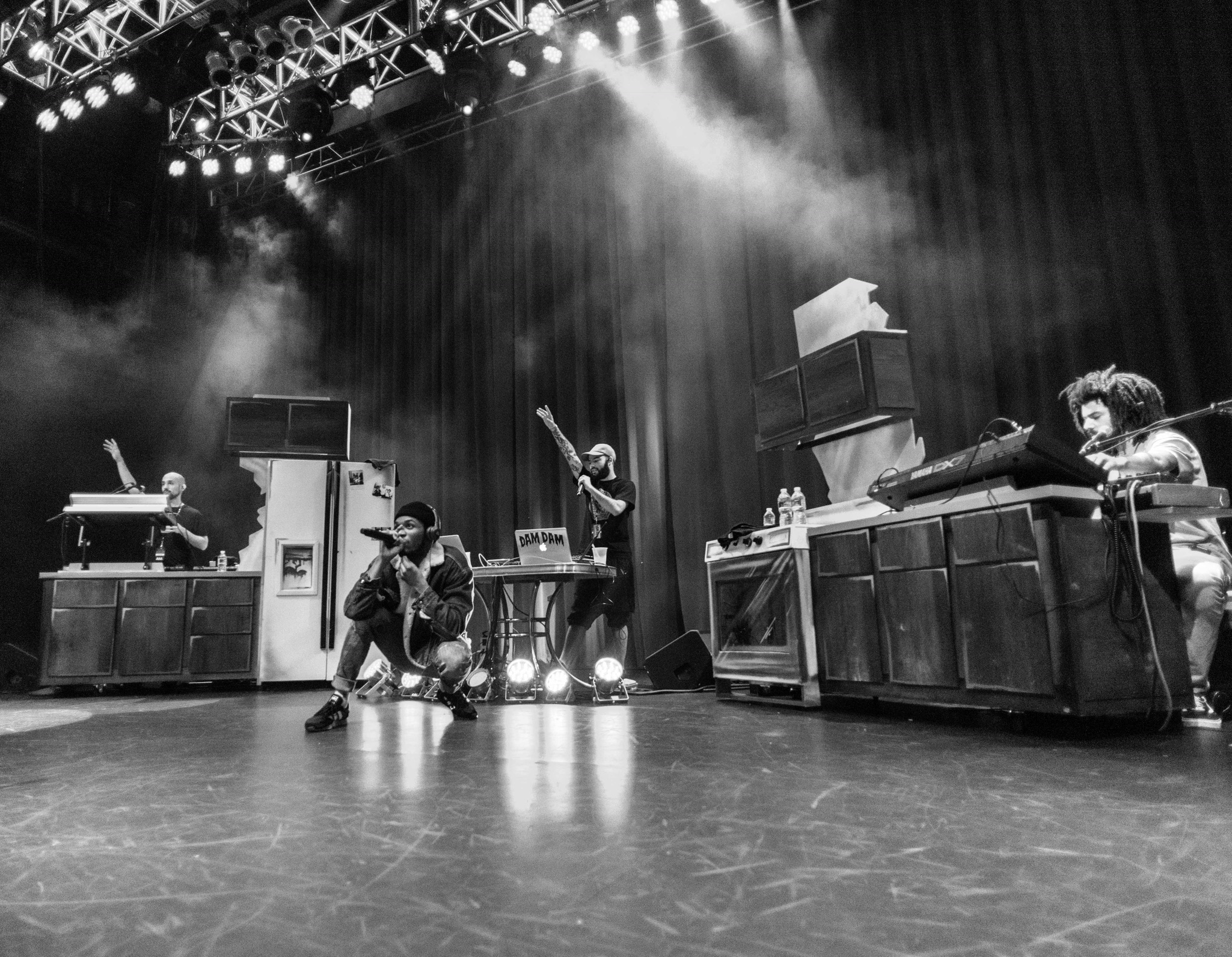
I never really sought to be independent. I always dreamed I’d be signed, maybe even with my own imprint doing stadium tours and winning awards and shit like that. Early on, the decision to be independent was out of necessity. Nobody seemed to want to sign me. I had been in meetings a couple times in 2014 and in 2015 where I really thought I was about to do a deal, and then they’d just disappear, seeming uninterested. Honestly the only reason I wasn’t signed back then was because nobody tried hard enough.
But after CARE FOR ME in 2018, things were different. Overwhelmingly different. Going into the conversations this time I was more prepared. I had three notes that were essential to the deal: keep creative control, a short commitment (like 2-3 albums), and reversion of masters (after 7 years). Even with some leverage, the short commitment and master reversion were hard points of negotiation. I met some really good people in some of these meetings, but I ultimately decided against doing a major label deal at the time for a variety of reasons.
BEING INDEPENDENT, YOU MOVE ON YOUR OWN CLOCK. YOU SEE THE TEDIOUS DETAILS AND HAVE TO BE PATIENT. YOU WATER A SEED EVERY DAY AS OPPOSED TO JUST GETTING A PLANT.
What made more sense for me was a distribution deal. I could have access to resources like a brand partnerships team, marketing, and PR. Of course, the budgets may be smaller, but I’m retaining ownership of my art from day one. My intent isn’t to sway anyone from pursuing a major label deal. I’d just like to give my insight that there are alternative routes where artists can own their work. No matter what you do, major label, distro, or completely indie, the money being spent is going to be your own—an advance that must be recouped. It’s just important to know and understand that you have options.
It’s hard to be offered some of the things that I was offered over the years and still stick to your gut. Especially when, as I told my therapist, poverty felt inescapable. That was not a thought, but a fact in my neighborhood. Everybody was stuck. But, I figured, my gut got me here, making decisions based on trust and following my instincts. It’s hard to be instinctual when we begin to talk about millions. It becomes hard to even value trust the same way. Especially when poverty felt inescapable. I always think of that because I don’t like making decisions based on fear. A lot of people have deep phobias attached to money and never going back to what it was like before they became successful. I’m no different, that shit scared the fuck out of me.
My grandparents put their home up when my uncle was locked up. No one owns anything in my family. My masters are keeping a roof over my head and probably a few other people’s heads too, honestly. They have already shown me their power. Music that was released over four years ago is still making me monthly earnings. It’s crazy to think about. It feels unfair to go into a system that would take that away from artists. Again, everyone is different. Not everyone’s older catalog is still producing, and I’m still learning about most of that stuff myself. I’m excited for the day where masters are treated fairly in the system. Fairness is subjective, but ownership is not. I own what I create. That’s fair to me.
Saba features on the ‘Judas & The Black Messiah’ movie soundtrack alongside Jay-Z, Nipsey Hussle, Nas, A$AP Rocky, and many more. Listen to his collaboration with Smino, “Plead The .45th” below.

